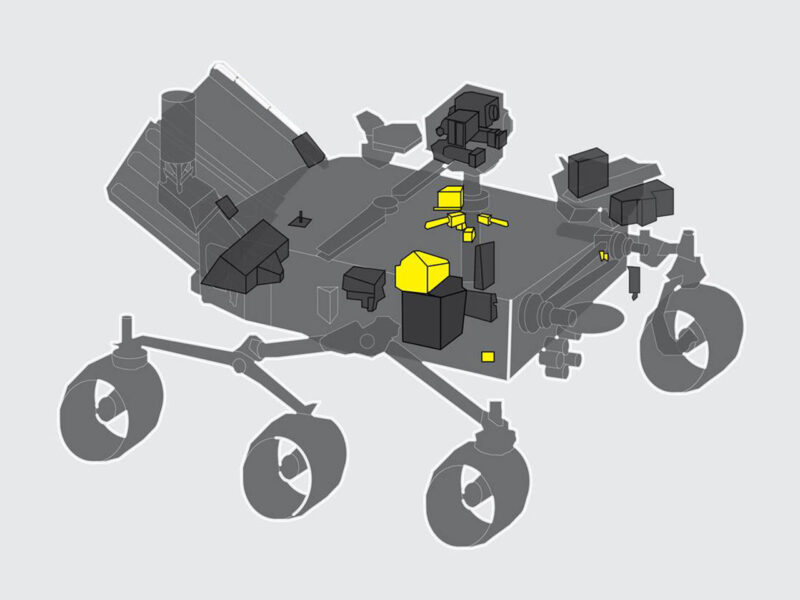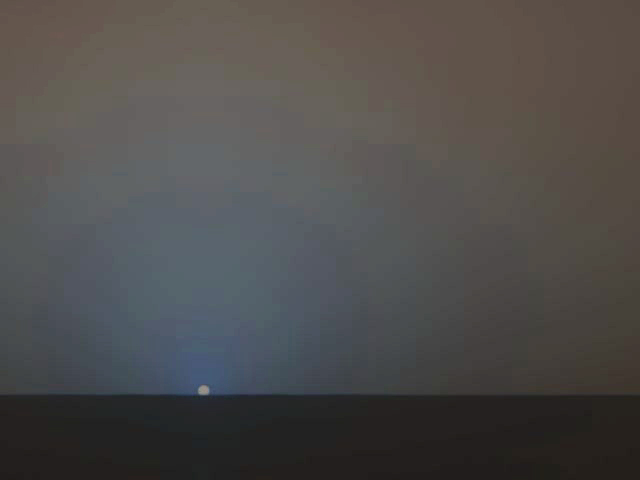NASA’s Perseverance rover is recording the windy weather in Jezero Crater, chronicling its role in making the Red Planet dusty.

NASA / JPL
Since the arrival of NASA’s Perseverance on Mars on February 18, 2021, the rover has surveyed its home in Jezero Crater, deployed the Ingenuity helicopter, and begun to analyze and cache samples for a future sample-return mission.
But while geology and astrobiology feature in its primary mission, Perseverance is also proving to be a first-rate interplanetary meteorologist. Recently, researchers have revealed some of the amazing dust storm activity the rover is capturing in Jezero Crater, including videos of some of the most intense dust devil activity seen on Mars.

NASA / JPL
The findings, published in Science Advances, come from the rover’s first 216 sols on Mars. The images come primarily from the rover’s main navigation camera, while radiation and dust sensors, part of the Mars Environmental Dynamics Analyzer (MEDA) mounted on the rover’s mast, provide additional data.

Astronomers have witnessed dust storms cover Mars for almost as long as they've been observing the planet. Global storms obscure surface features and give the Red Planet a saffron-yellow hue; smaller storms, both regional and local, can also occur. But scientists haven't fully understood how so much dust can make its way off the surface and into the air.
Winds must play an important role. One of the new videos shows a gust of wind lifting a massive cloud of dust, the first time such an event has been seen on Mars. The rover witnessed two other massive gust-lifting events, the biggest of which formed a huge dust cloud covering 4 square kilometers (1.5 square miles).
“Every time we land in a new place on Mars, it’s an opportunity to better understand the planet’s weather,” says Claire Newman (Aeolis Research) in a recent press release. “We think these gust-liftings are infrequent but could be responsible for a large fraction of the background dust that hovers all the time in the Martian atmosphere.”

NASA / JPL
Jezero's a good place to watch this process in action because it sits near the dust storm track that runs north to south across the planet. Perseverance has witnessed hundreds of dust devils cross the crater, at a rate of four per sol and a peak rate of one per hour around local noon. The rough surface of the crater floor — including the treacherous Séítah dunes — make it an ideal source for dust-lifting events. Indeed, large gust-lifting events, rare as they are, kick far more dust into the air than the smaller daily whirlwinds.

NASA / JPL-Caltech
Whirlwinds actually come in handy for solar-powered missions because they can clear dust off solar panels, as happened for the Insight lander in Elysium Planitia. Fine dust clings to solar panels, though, and power inevitably begins to drop, as it is doing now for both Insight and Ingenuity.
Whirlwinds can also be downright destructive. The winds at Jezero are so intense that they, or rather the sand grains they carried, have damaged MEDA’s two wind sensors. (These sensors are vulnerable to the wind precisely because they have to be exposed to it to measure it.) In addition to the science the sensors return, they also play a crucial role in monitoring winds prior to Ingenuity's flights. Researchers hope a software upgrade could restore the wind sensors.
More wind and dust activity is likely in the works. “We had a regional dust storm right on top of us in January,” says Newman. “We’re still in the middle of dust season, so we’re very likely to see more dust storms.”
For now, it's the robots that deal with the consequences. But one day human explorers, too, may have to deal with the dust storms of the Red Planet.
 0
0









Comments
You must be logged in to post a comment.